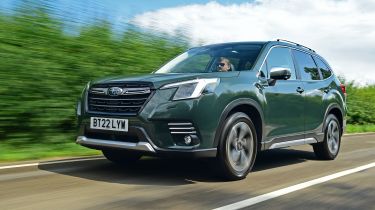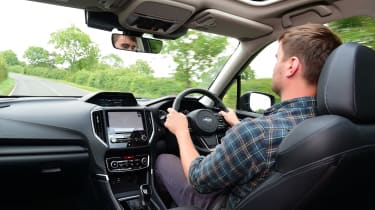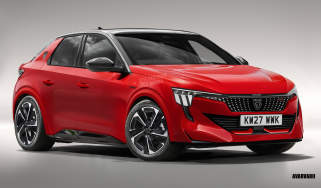Subaru Forester - Engines, performance and drive
The latest Subaru Forester is much better to drive than its predecessor, although its CVT gearbox takes some getting used to

The Subaru Forester was thoroughly improved for the current generation, introduced in mid-2019. It sits on the Subaru Global Platform, a chassis that facilitates mild-hybrid power, more sophisticated suspension and improved safety. It’s the same as found underpinning the latest Impreza, XV and Levorg models.
It’s this platform that has improved the way the Forester drives. There's less body roll than before, and it offers good levels of grip and a reassuring sense of plantedness. The Forester makes making swift, comfortable progress easy, although we wouldn't put it in the same dynamic class as its Ford Kuga rival.
There’s a pliancy to the ride that lends itself well to our rutted roads, all the while offering plenty of travel and ground clearance when venturing off-road. It’s reasonably refined on the move too – the engine is quiet in its operation, although there’s more wind noise at motorway speeds than we'd like.
0-62mph acceleration and top speed
The Forester is powered by a 2.0-litre flat-four petrol engine that produces 148bhp and 196Nm of torque, assisted by a small electric motor and battery that provide mild-hybrid assistance and all-electric drive at speeds of up to 25mph. Select X-Mode and the mild-hybrid system injects more torque lower down in the rev range to make short work of slippery slopes and stationary obstacles ledges and tree roots.
Performance is adequate but not especially impressive: 0-62mph takes 11.8 seconds and top speed is 117mph, and overall you're left with the feeling that the Forester could certainly do with more oomph.
Subaru has worked to improve throttle response in normal driving and while the CVT gearbox still feels a little detached in its operation, we noticed a small improvement in the feeling of immediacy from the Forester’s drivetrain. The car’s battery recharges through a mix of engine power and regenerative braking, but the latter does not adversely affect brake feel. Engineered ‘steps’ in the transmission can be accessed via paddles behind the steering wheel, but in truth you're unlikely to use them. However, we're not big fans of this transmission - particularly its habit of holding on to its virtual gears longer than needed.










